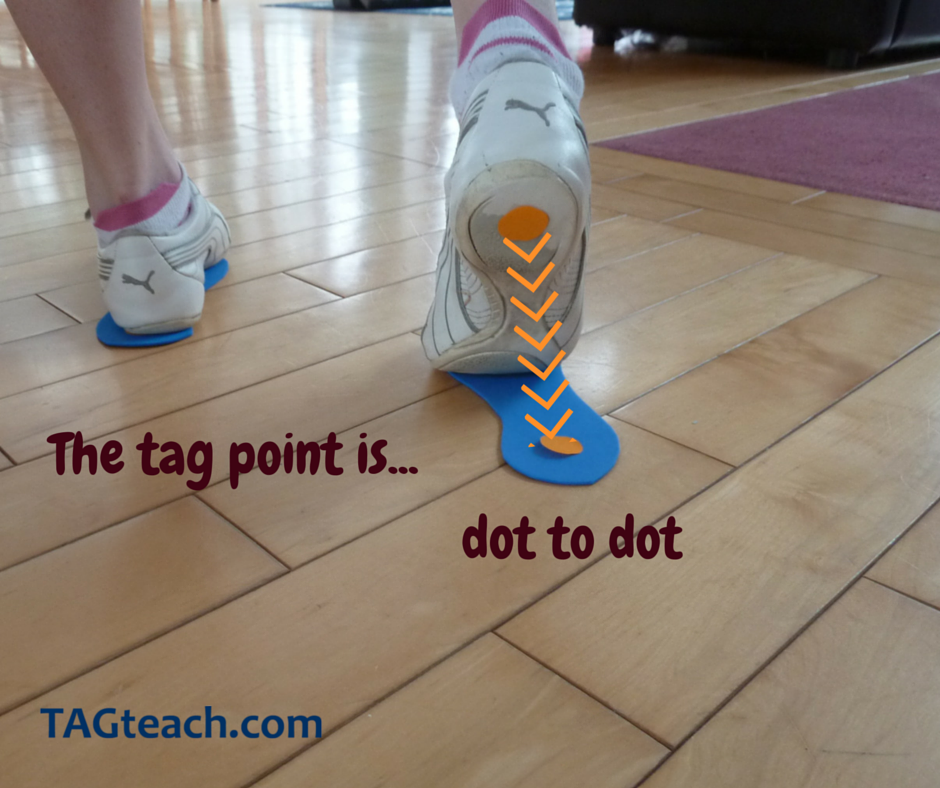
Would you like to help your child with autism calm down when he or she becomes upset? Here is a great way to help your child get to a calm state of mind and body.
The calming tag points are five tag points that I come back to time and again because they are so useful. The calming tag points are:
- Quiet Mouth – The child is silent
- Appropriate Vocalization or Communication (words, signs, gestures, picture symbols, device) – The child communicates in his/her own way
- Hands Down – Hands placed at side or in front of body (not flailing about)
- Feet On Floor – Both feet touch the floor or ground
- Exhales – Child breathes out; you can see shoulders/chest go down upon exhalation.
All of these are simple behaviors that a child performs often, so there are lots of opportunities to tag and reinforce.These tag points increase calm and communicative behaviors in children with autism. Plus, the more reinforcement and success our children experience, the happier they are.
Use Reactively — For Tantrums and Agitation
In the early years I used these tag points to calm my son down during tantrums. They were highly effective in calming him down and helping him regain his composure. Best of all, after using TAGteach a few times in this way, his tantrums diminished dramatically.
Use Pro-actively — For Calm and Individual Development
After my child learned to be calm, I found myself coming back to these tag points again and again. Why? I discovered that they were a great way to maintain his calm behavior and promote happiness and competence.
Once or twice a day, I sit down with my son for 5-10 minutes and tag and reinforce the calming tag points. He enjoys these quiet sessions very much, and the result is a trusting relationship: he feels calm, happy, and supported (and so do I).
If we are traveling or doing something unexpected, I tag and reinforce the calming tag points too. The reinforcement and familiarity keep him calm and collected; as a result, he handles challenging and unexpected situations very well and often displays new and amazingly competent behaviors. I think of this as “pro-active” tagging.
The Calming Tag Points – Always Available and Always Useful
For these reasons, I recommend that parents and professionals dealing with children with autism consider using the calming tag points as part of their behavior building repertoire. They work, they are easy to observe, and the child enjoys the success and reinforcement.
For more information, please see these links:

What is TAGteach?
TAGteach stands for Teaching with Acoustical Guidance. TAGteach is a teaching and communication method based on the scientific principles of Applied Behavior Analysis (ABA).
TAGteach enables extremely precise positive reinforcement of behavior by using an acoustical signal to “mark” a behavior – at the precise moment the child performs the behavior! The acoustical signal is a short, sharp sound made by a handheld device (the “tagger”). When the child performs the correct action, the parent/instructor immediately presses the button on the tagger and hands over a treat (candy, treat, token, praise, social recognition, or money) as a reinforcer.
With TAGteach, it is easy to reinforce behaviors precisely, quickly, and intensively. The immediate, accurate feedback and positive reinforcement result in the child performing the correct action more often, and for longer periods of time. With immediate feedback and learning tasks broken down into small steps, children (and adults) can learn many new skills with TAGteach — at their own pace.
To learn more about this effective, low-cost method visit TAGteach International or Chaos to Calm
For research on TAGteach, please see the TAGteach Reference List
Join the free TAGteach for Learning, Behavior, and Autism Facebook group
TAGteach taggers available here and i-Clicks available here
See Martha’s book about TAGteach for Autism or feel free to ask me a question (with no obligation).
Sign up for my mailing list to receive updates, new articles and free tips right in your inbox!
If you liked this post, please share it. Thank you!
Share the post "TAGteach for Autism: The Calming Tag Points"








